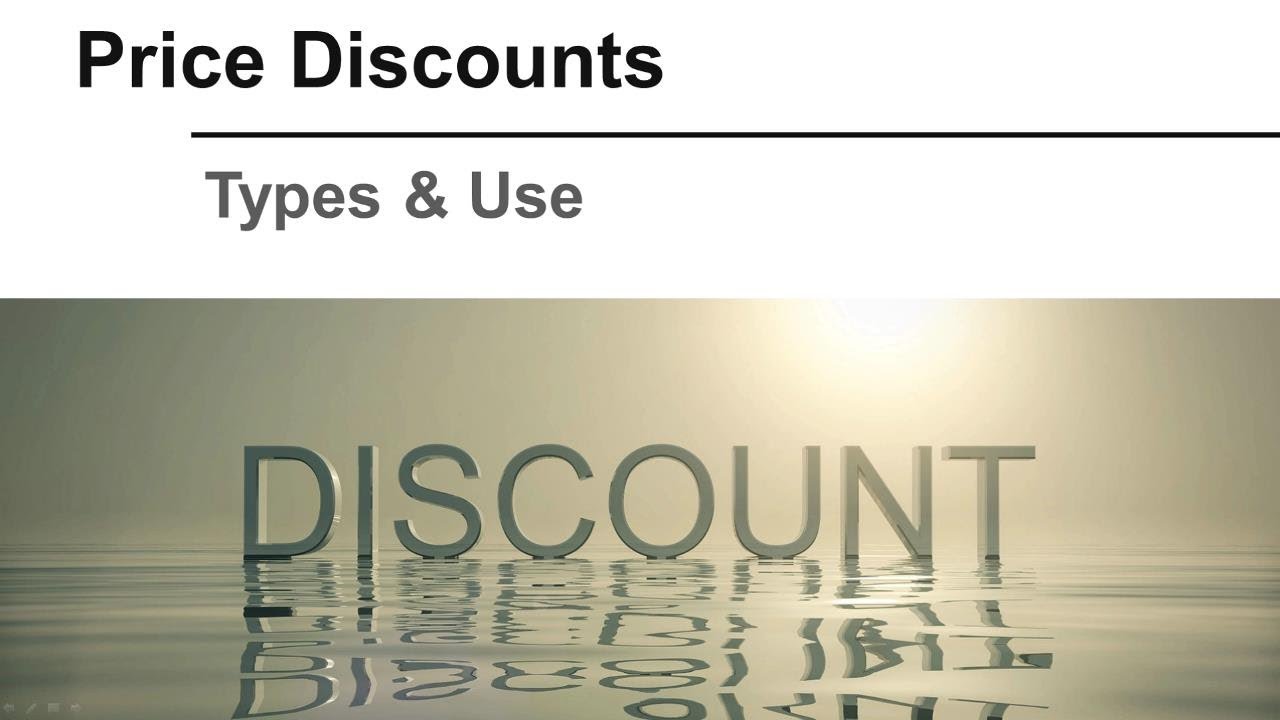There are two popular types of discounts:
- Quantity discounts
- Cash Discounts.

Quantity Discounts
Quantity discounts are price reductions related to the quantities purchased. Quantity discounts may be related to the size of the order being measured in terms of physical units of a particular commodity.
Read Also: Pricing Methods in Marketing
This is practicable where the commodities are homogeneous or identical in nature, or where they may be measured in terms of truck- loads. However, this method is not possible in the case of heterogeneous commodities which are hard to add in terms of physical units or truck-load.
The drug industry and the textile industry offer examples of these types. Here, quantity discounts are based upon the monetary value of the quantity ordered. Money becomes a common denominator of value.
Quantity discounts based on physical units become important where the cost of packing is a significant factor and orders of less than standard qualities, say, less than a case of 6 pressure cookers, may involve higher packing charges per cooker since the space remains unutilized. Thus, quantity discounts may be employed to induce full carton purchasing.
In some cases, quantity discounts may be based on the cumulative purchases made during a particular period, usually a year or a season, e.g. Christmas discounts may be given on the basis of cumulative purchases made during the Christmas season spread over October to December.
Read Also: Explanation for the widespread use of Full–cost Pricing
One important objective of quantity discounts is to reduce the number of small orders and thereby avoid the high cost of servicing them. Quantity discounts can facilitate economic size order in three ways:
A given set of customers is encouraged to buy the same quantity but in bigger lots
The customers may be induced to give the seller a larger share of their total requirements by giving preference over competitors. 3 Small size purchasers may be discouraged and bigger size customers may be attracted.
In many cases, discounts have become a matter for trade customers. Quantity discounts are most useful in the marketing of materials and supplies but are rarely used for marketing equipment and components.
Cash Discounts
Cash discounts are price reductions based on the promptness of payment. An example of a discount can be 2 percent off if paid in ten days, full invoice price min 30 days. In practice, the term cash discounts may vary widely.
A cash discount is a convenient device to identify and overcome bad credit risks. In certain trades where credit risk is high, cash discounts would be high. If a buyer decides to purchase goods on credit, this reflects his weak bargaining position, and he has to pay a higher price by foregoing the cash discount.
By prompt collections, manufacturers reduce their working capital requirements and thus save their interest costs. However, allowing discounts may involve paying 36.5 percent in order to save 18 percent.
On the basis of 2 percent off if paid in 10 days, full involve price in 30 days, the seller’s cost comes to 36.5 percent (for getting the money 20 days before he has to lose 2 percent which amounts to 36.5 percent per year). He could get accommodation from any bank at about 18 percent.
Thus, it is the reduction in collection expenses and in risks rather than savings on interest, which should be the guiding consideration for cash discounts.
Read Also: Objectives of Pricing Policy in Marketing
